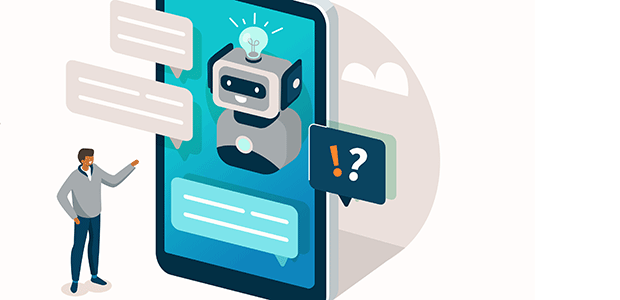
Why chatbots and conversational AI agents are poles apart
Chances are, you have probably had some sort of engagement with a chatbot in the past. These technologies are used by an array of organisations, usually in an attempt to create a much more efficient customer experience, and in many circumstances, cut costs along the way. However, these solutions are not always up to the task.
In the past, many companies have shot their customer service reputation in the foot by adopting these platforms. This is because the majority of these chatbots are keyword-driven and involve a lot of manual curation, which means they are programmed only to deal with predictable information.
Whenever a user has a more complex question to ask, or if they use a word that the bot does not understand, the conversation disintegrates, leaving users frustrated and unsatisfied with the whole experience. In fact, according to research from Holograph Digital, 73% of customers who have a negative interaction with a chatbot will not use that bot again.
The issue here, is that due to their perceived similarities, businesses tend to overlook the potential of Conversational AI (CAI) platforms, mistaking them for basic chatbots with limited use-cases. As a result, organisations may end up missing out on technologies which can genuinely streamline their processes, as well as provide customers and employees with the nuanced support they need.
Here are some things that businesses would do well to know…
Debunking the chatbot myth
First and foremost, it’s important to point out that the conversational AI industry is growing at an unprecedented rate. Research has predicted that the global conversational AI market will grow from $4.8bn in 2020, to around $13.9bn by 2025. Evidently, these technologies are gaining traction, but many individuals may need some more convincing.
Many would be forgiven for mistaking CAI platforms for earlier chatbot models, which grew from Interactive Voice Response (IVR) systems more than 20 years ago. At least at face value, these interfaces can appear similar, with the ability to offer basic responses to users, or even prompt those who have been inactive for a period of time, but this is not actually the case.
In reality, basic chatbots involve a lot more upfront manual configuration than CAI platforms require, meaning that there is more human intervention going on under the hood, so to speak.
Typically, they are built to respond to a set of rigid keywords, and anything that falls outside of this domain will cause the system to falter.
With CAI platforms, however, this is not the case. These systems have a much firmer grasp of semantics across the board, and rely on neural network technologies to better contextualise the information fed to them.
Moreover, they learn consistently from interactions with end-users to deliver more personalised responses, all the while synthesising the significant volumes of information stored in their knowledge banks to revert the most up-to-date and accurate answers.
The result of this is that there is more scope for CAI technologies to be used outside the traditional remit for chatbots, particularly where more broad support may be required.
Hybrid work: the newest use-case for CAI
In many ways, basic chatbot technologies still work well in a certain set of scenarios, involving more transactional customer support, and I do not expect CAI technologies to detract from this. However, given that more and more organisations are moving towards hybrid working arrangements in the wake of COVID-19, many will face a pressing need for fresh solutions to meet the needs of their staff and customers against this new backdrop.
For one, business leaders should be looking towards solutions that provide their employees with the information they need to do their jobs well, without necessarily needing to rely on lengthy video calls, or in-person training sessions.
Programs that rely on Natural Language Processing (NLP), for example, will allow staff to ask questions about their roles on the go and receive answers to their queries in real time. Given that this software will have the ability to account for individual differences, accents, and dialects, individuals should feel fully understood, despite the fact they are conversing with a machine.
Even further, these technologies will prove useful when it comes to training staff year-round, rather than on a more occasional basis. As these systems will have the ability to contextualise information, refer back to previous interactions, and employ a long-term working memory, CAI systems can provide a whole range of expertise throughout the course of an individual’s career, which should prove particularly useful in remote settings, as workers can gain more autonomy over their professional development.
These examples just scratch the surface when it comes to the use-cases that CAI technologies have to offer businesses, away from the more limited acumen that chatbots bring to the table. As such, it’s time for business owners to look beyond their misconceptions, and embrace the technologies of the future.


